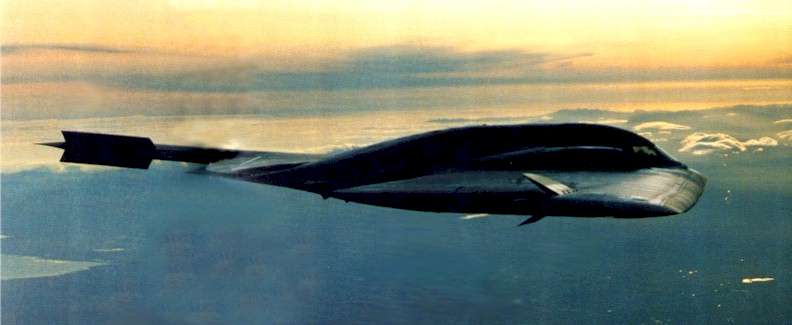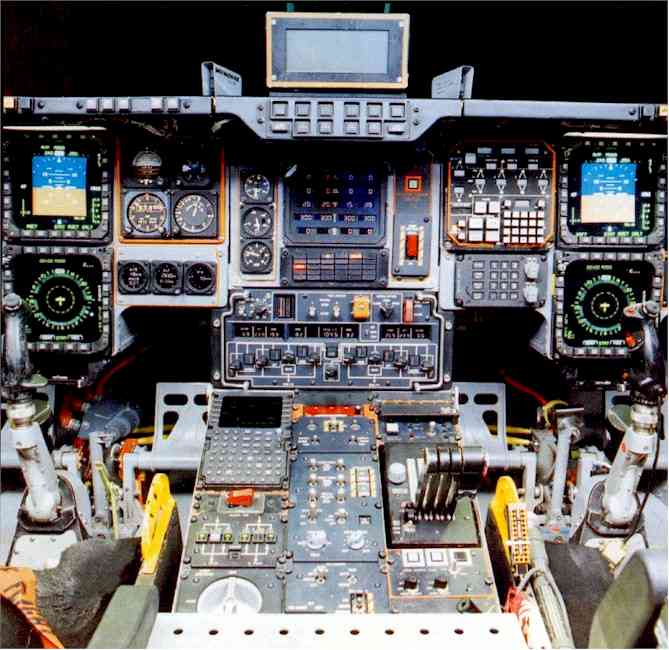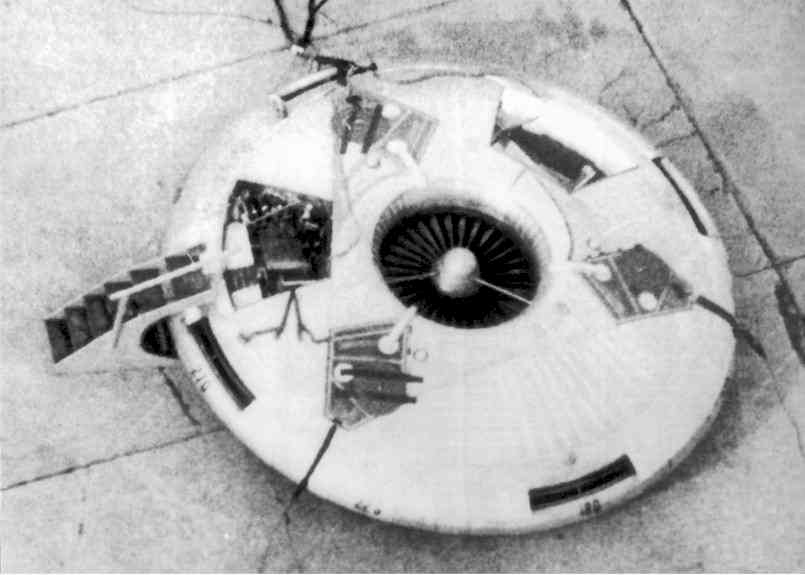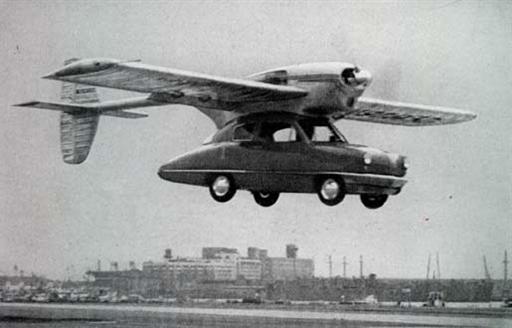Possible UFOs
Northrop Grumman B-2A Spirit Flying-Wing BomberBut I have seen the science I worshipped and the airplane I loved, destroying the civilisation I expected them to serve. - Charles A Lindbergh Time magazine, 26 May 1967
In 1978 it was announced that a new bomber was to be developed for the USAF for strategic penetration missions. Northrup submitted a radical new flying-wing design. Eventually becoming the Grumman B-2 Spirit, this bomber was intended at the outset for stealth operations (correctly termed low-observable), making its detection extremely difficult. A principal aim was to ensure that it offered the smallest possible radar image to an enemy, whereby the honeycomb internal structure, skin materials and special finishes absorb and dissipate rather than reflect radar energy. The composites materials used in its construction also greatly reduce infra-red signature, aided by the overwing air intakes and overwing engine exhaust nozzles. Tell-tale contrails left in the sky are reduced by management of the engine efflux temperature, while special avionics systems include the deployment of a "low-probability-of-intercept" strike radar, and emitters are turned off when the aircraft goes into attack mode. To ensure the airframe is "clean" and thus stealthy and efficient, all weapons are carried internally (up to 40,000 pounds/18,145 kg in two bays in the centre fuselage area, with weapons carried on racks or rotary launchers). Similarly, there are no vertical stabilising or control surfaces, the jagged wing trailing edge having a series of horizontal elevons and split surfaces that undertake the work of ailerons, elevators, flaps, rudders and airbrakes.
Two-crew flight deck of the Northrup Grumman B-2A Spirit, although a third person can be accommodated. The first of six B-2 development aircraft flew on 17 July 1989 as its delivery flight to Edwards Air Force Base (former Muroc). It had been expected that the USAF would eventually receive a total of 133 operational BH-2As but cutbacks reduced this to 20, of which 16 are being operated by the 393rd and 715th squadrons of the 509th Bomb Wing at Whiteman AFB,k achieving initial operational capability in 1997. In 1996 it was decided to fund the modification of the first B-2 development aircraft to bring it up to full operational standard, thereby giving the USAF 21 aircraft. The 172-ft (54.2-m) span B2-A has a take-off weight of 336,500 pounds (152,630 kg) and can cruise at Mach .8. Range with a 32,000-pound (14,515-kg) bomb load is 6,900 miles (11,100 km), which can be extended to over 11,500 miles (18,500 km) with flight refuelling. Source: The World's Strangest Aircraft: A Collection of Weird and Wonderful Flying Machines by Michael Taylor
Avro VZ-9V AvrocarForget all that stuff about thrust and drag, lift and gravity; an airplane flies because of money. - Great Aviation Quotes Never fly anything that doesn't have the paint worn off the rudder pedals. - Harry Bill
Steps on the left led to one of the two cockpits. Philip Jarrett collection On 5 December 1959 Avro Canada flew the Avrocar on its first tethered test. This, developed for the US Department of Defense and military designated VZ-9V, was a "flying saucer" configured vertical take-off and landing vehicle, carrying a crew of two. Three Continental J69 turbojet engines were used to power a central fan to supply a peripheral air curtain and a ground air cushion, while the aerodynamic airframe was to provide lift during horizontal flight. The concept was extensively tested but later abandoned. Source: The World's Strangest Aircraft: A Collection of Weird and Wonderful Flying Machines by Michael Taylor
In Case You Were Wondering How to Get Home from the Airport...
Photograph from February 1948 issue of National Geographic Source: www.lib.berkeley.edu call no VF 08424 - you may want to start with their home page ({"Transportation Futuristics") as they have many pages of fascinating "almosts"...
To view other articles related to flying including history, unusual flying machines, hot air balloons, skydiving, gliding, problems, airports, turbulence, pilots, crashes, the
Paris Air Show, the future, blimps, space travel, solar sails and more, clicking the "Up" button below takes you to the Table of Contents for this section on Flight. |
 Animals
Animals Animation
Animation Art of Playing Cards
Art of Playing Cards Drugs
Drugs Education
Education Environment
Environment Flying
Flying History
History Humour
Humour Immigration
Immigration Info/Tech
Info/Tech Intellectual/Entertaining
Intellectual/Entertaining Lifestyles
Lifestyles Men
Men Money/Politics/Law
Money/Politics/Law New Jersey
New Jersey Odds and Oddities
Odds and Oddities Older & Under
Older & Under Photography
Photography Prisons
Prisons Relationships
Relationships Science
Science Social/Cultural
Social/Cultural Terrorism
Terrorism Wellington
Wellington Working
Working Zero Return Investment
Zero Return Investment


